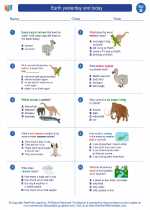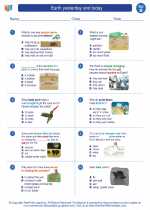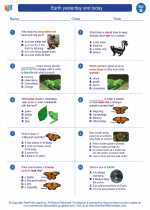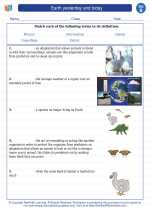Earth Yesterday and Today
Welcome to the study guide for "Earth Yesterday and Today"! In this topic, we will explore how the Earth has changed over time and compare it to the present day. Let's dive in to understand the changes that have occurred on our planet.
Formation of Earth
Approximately 4.6 billion years ago, the Earth was formed from dust and gas in the solar system. Over time, the Earth's surface began to cool and solidify, forming the crust and other layers of the planet.
Continental Drift
Millions of years ago, the Earth's landmasses were joined together in a supercontinent known as Pangaea. Over time, the continents drifted apart due to the movement of tectonic plates, resulting in the arrangement of landmasses that we see today.
Changes in Landforms
Earth's landforms, such as mountains, valleys, and rivers, have been shaped by natural processes such as erosion, weathering, and volcanic activity. These processes have transformed the Earth's surface over millions of years.
Climate Change
The Earth's climate has undergone significant changes over time. Factors such as variations in the Earth's orbit, solar radiation, and volcanic eruptions have influenced the planet's climate patterns. Additionally, human activities in modern times have contributed to changes in the Earth's climate.
Study Guide Questions
- What were the major landmasses that formed Pangaea?
- How have tectonic plate movements contributed to the formation of Earth's current continents?
- Explain the processes that have shaped the Earth's landforms over time.
- What are the natural and human-induced factors that have influenced the Earth's climate?
Explore these questions and dive deeper into the topic to gain a comprehensive understanding of how the Earth has evolved over time.
.◂Science Worksheets and Study Guides Second Grade. Earth yesterday and today

 Worksheet/Answer key
Worksheet/Answer key
 Worksheet/Answer key
Worksheet/Answer key
 Worksheet/Answer key
Worksheet/Answer key
 Vocabulary/Answer key
Vocabulary/Answer key
